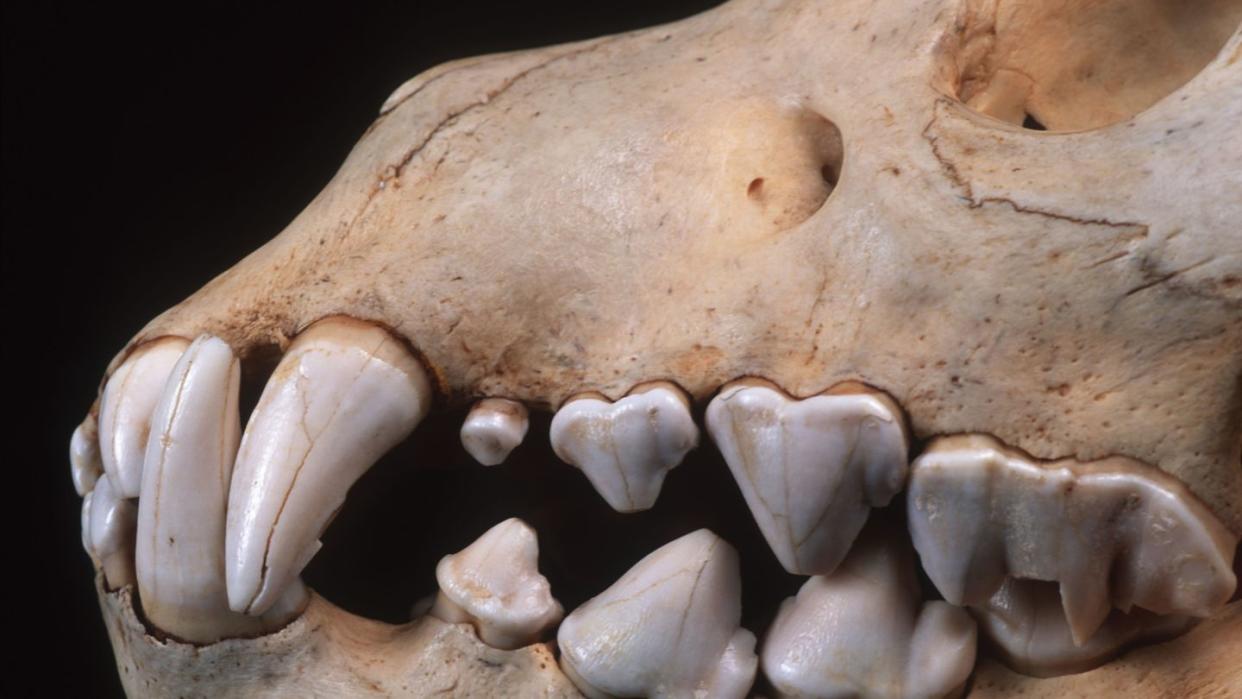Tiny Ancient Teeth Have Solved a Major Mystery of Evolution

Today’s mammals are the product of 200 million years of evolution, but scientists aren’t sure exactly how features of modern mammals came to be.
A twin pair of studies published in the journal tackles to mysteries at once — the evolution of the mammalian molar as well as the auditory ossicles.
By analyzing these features using two fossilized species from the Jurassic, the papers provide an intimate snapshot of evolution at work.
Mammals are often thought as Earth’s inheritors following the decimation of the dinosaurs after the K-T extinction, but the story of mammals dates nearly as far back as the origin of dinosaurs themselves more than 200 million years ago. Of course, where dinosaurs were large, diverse, and intimidating, the first mammals were very small, rat-like creatures scurrying around dinosaurs feet and mostly trying not to get eaten.
There’s a lot we don’t know about these early mammals. For example, the first mammals evolved out of the reptilian order Therapsida. These early creatures also laid eggs, much like today’s monotremes (platypuses and echidnas), however the process with which they shed their reptilian features and began to evolve into attributes we know about mammals today remains a mystery.
Scientists from the American Museum of Natural History and the Chinese Academy of Sciences analyzed fossils from the early-to-mid Jurassic in an attempt to answer some of these questions. They analyzed animals skulls and molars in an attempt to understand the early years of the order Mammalia. The results were published in two studies in the journal Nature last week.
The first animals the team analyzed were two members of the shuotheriids, which lived around 168 to 164 million years ago in inner Mongolia. These small, mouse-like mammals are particularly interesting because of their strange dental characteristics. The team discovered that their molars in particular are similar to another extinct mammal group called the docodontans, pointing to the fact that they’re likely related.
“When you look at the fossil record, both for mammals and many other sorts of animals, teeth are the part of the body that you are most likely to recover,” co-author Jin Meng, a curator at the American Museum of Natural History, said in a press statement. “Yet since the 1980s, the perplexing tooth shape seen in shuotheriids has been a barrier to our efforts to understand early mammal evolution. These new specimens have allowed us to solve this longstanding problem.”
Naming this species Feredocodon chowi, Meng — along with his collaborator Fangyuan Mao from the Chinese Academy of Sciences, analyzed the jaws of F. chowi along with another mammal species, the Dianoconodon youngi, which lived several million years earlier around 201 to 184 million years ago. They focused on the small auditory bones unique to mammals known as the ossicles, which help turn vibrations in the air into ripples in the fluid of the ear.
In the older fossil, D. youngi, scientists could see that the these bones, originally associated with the jaw in an earlier reptilian order, were already beginning to lose the ability to produce force for chewing. Fast forward a couple dozen million years and the younger fossil, F. chowi, displays auditory ossicles similar to the ones found in our ears today. These two fossils together provide an amazing snapshot of evolution at work.
“Scientists have been trying to understand how the mammalian middle ear evolved since Darwin’s time,” Meng said in a press statement. “While paleontological discoveries have helped reveal the process during the last a few decades, these new fossils bring to light a critical missing link.”
Of course during the time of D. youngi and F. chowi, they were far from the top of the food chain. But little did they know it, they’re descendents would one day become the dominant animal class on Earth.
You Might Also Like

